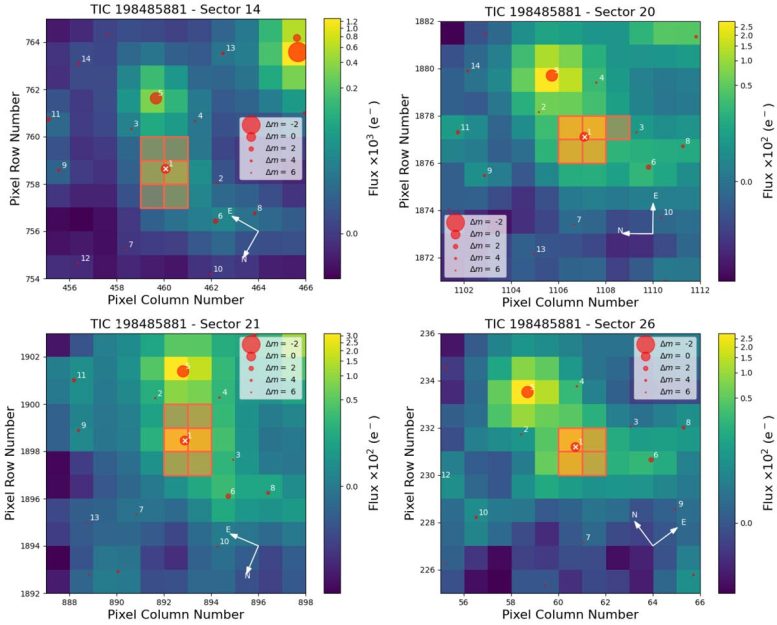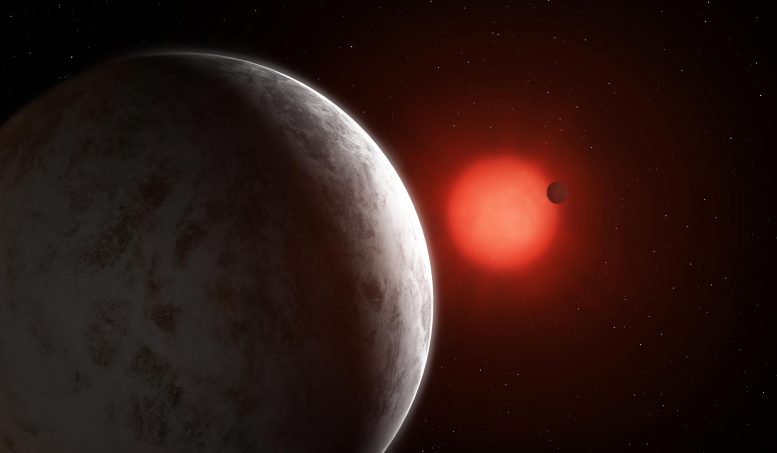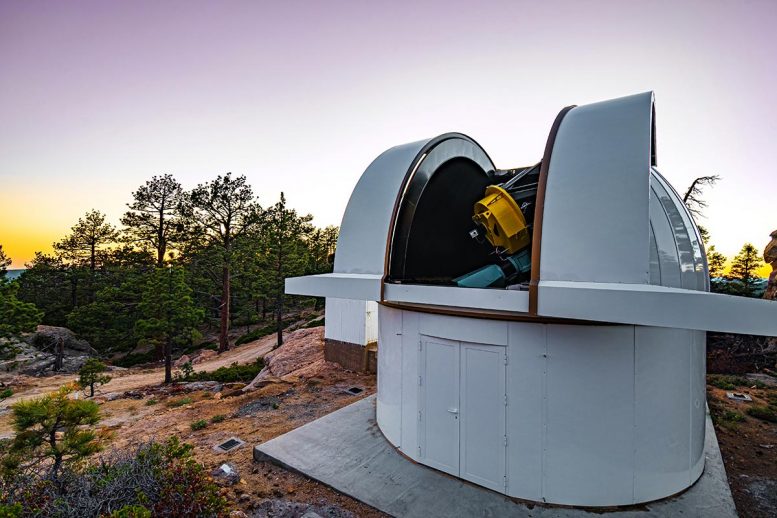Sub-Neptune Planet Orbiting in “Habitable Zone” of Red Dwarf Star
The SAINT-EX Observatory is a fully robotic facility hosting a 1-metre telescope based in Mexico. Credit: Institute of Astronomy, UNAM / E. Cadena
Observation of the star with the Las Cumbres Observatory Global Telescope subsequently ruled out the possibility that a planet with a 59-day orbital period was causing the drop in brightness. “Next, we wanted to find out if the 35-day orbital period could be possible,” explains Nicole Schanche.
The Mexico-based SAINT-EX telescope, co-operated by the CSH and the NCCR PlanetS, is purpose-built to study red dwarfs and their planets in more detail. SAINT-EX is an acronym that stands for Search And characterIsatioN of Transiting EXoplanets. The project was named in honor of Antoine de Saint-Exupéry (Saint-Ex), the famous writer, poet, and aviator. SAINT-EX observed a partial transit of TOI-2257 b and was able to confirm the exoplanet’s exact orbital period around its star, 35 days. “Another 35 days later, SAINT-EX was able to observe the entire transit, which gave us even more information about the properties of the system,” says co-author Robert Wells from the CSH, who was involved in the data processing.
A temperate planet with an irregular orbit
With its 35-day orbital period, TOI-2257 b orbits the host star at a distance where liquid water is possible on the planet, and therefore conditions favorable for the emergence of life could exist. Planets in this so-called “habitable zone” near a small red dwarf star are easier to study because they have shorter orbital periods and can therefore be observed more often. The radius of TOI-2257 b (2.2 times larger than Earth’s) suggests that the planet is rather gaseous, with high atmospheric pressure not conducive to life.

TESS target pixel files of Sectors 14, 20, 21, and 26 that observed TOI-2257, generated by means of tpfplotter (Aller et al. 2020). The apertures used to extract the photometry by the SPOC pipeline are shown as red shaded regions. The Gaia DR2 catalog (Gaia Collaboration 2018) is over-plotted, with all sources of up to 6 magnitudes in contrast with TOI-2257 shown as red circles. We note that the symbol size scales with the magnitude contrast. While the star is relatively isolated, there is a small amount of contamination from outside sources, ranging from 2–5% of the total flux. Credit: DOI: 10.1051/0004-6361/202142280
“We found that TOI-2257 b does not have a circular, concentric orbit,” explains Nicole Schanche. In fact, it is the most eccentric planet orbiting a cool star ever discovered. “In terms of potential habitability, this is bad news,” Nicole Schanche continues. “While the planet’s average temperature is comfortable, it varies from -80°C to about 100°C depending on where in its orbit the planet is, far from or close to the star.” A possible explanation for this surprising orbit is that further out in the system a giant planet is lurking and disturbing the orbit of TOI 2257 b. Further observations measuring the radial velocity of the star will help confirm the eccentricity and search for possible additional planets that could not be observed in transit.
Candidate for observation with JWST
The James Webb Space Telescope (JWST), which successfully launched on December 25, will revolutionize research into exoplanet atmospheres. In order to prioritize good candidates for observations with the JWST, a transmission spectroscopy metric (TSM) was developed that rates different system properties. TOI-2257 b is well positioned with respect to TSM and is one of the most attractive sub-Neptune targets for further observations. “In particular, the planet could be studied for signs of features such as water vapor in the atmosphere,” Nicole Schanche concludes.
Reference: “TOI-2257 b: A highly eccentric long-period sub-Neptune transiting a nearby M dwarf” by N. Schanche, F. J. Pozuelos, M. N. Günther, R. D. Wells, A. J. Burgasser, P. Chinchilla, L. Delrez, E. Ducrot, L. J. Garcia, Y. Gómez Maqueo Chew, E. Jofré, B. V. Rackham, D. Sebastian, K. G. Stassun, D. Stern, M. Timmermans, K. Barkaoui, A. Belinski, Z. Benkhaldoun, W. Benz, A. Bieryla, F. Bouchy, A. Burdanov, D. Charbonneau, J. L. Christiansen, K. A. Collins, B.-O. Demory, M. Dévora-Pajares, J. de Wit, D. Dragomir, G. Dransfield, E. Furlan, M. Ghachoui, M. Gillon, C. Gnilka, M. A. Gómez-Muñoz, N. Guerrero, M. Harris, K. Heng, C. E. Henze, K. Hesse, S. B. Howell, E. Jehin, J. Jenkins, E. L. N. Jensen, M. Kunimoto, D. W. Latham, K. Lester, K. K. McLeod, I. Mireles, C. A. Murray, P. Niraula, P. P. Pedersen, D. Queloz, E. V. Quintana, G. Ricker, A. Rudat, L. Sabin, B. Safonov, U. Schroffenegger, N. Scott, S. Seager, I. Strakhov, A. H. M. J. Triaud, R. Vanderspek, M. Vezie and J. Winn, 7 January 2022, Astronomy & Astrophysics.
DOI: 10.1051/0004-6361/202142280
Read More: Sub-Neptune Planet Orbiting in “Habitable Zone” of Red Dwarf Star



